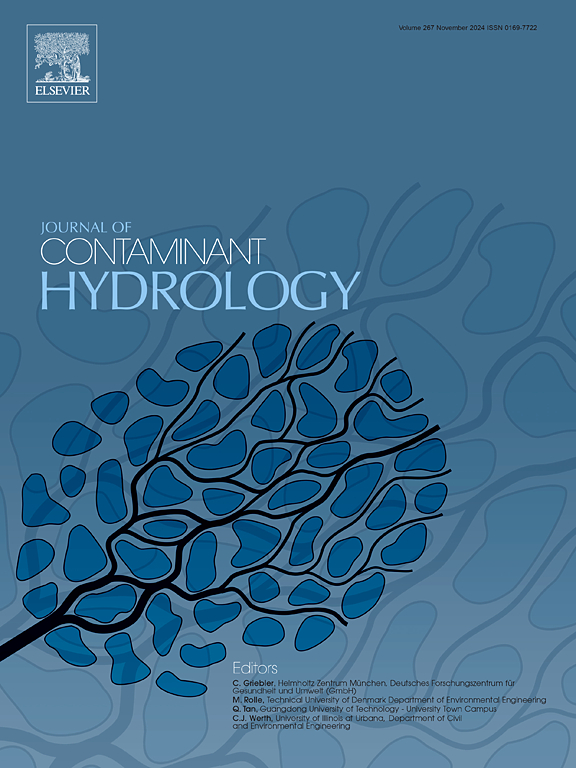探讨微塑料对淡水鱼的生态毒理学影响:综述
IF 3.5
3区 环境科学与生态学
Q2 ENVIRONMENTAL SCIENCES
引用次数: 0
摘要
微塑料(MPs)在环境中无处不在,由于其潜在的毒性作用,引起了生态毒理学家的极大关注。这些颗粒来自各种来源,包括较大的塑料碎片(二级微塑料)的碎片和消费品,如液体肥皂、去角质剂和清洁剂。塑料的广泛使用,加上废物管理不足,对全球生态系统健康构成越来越大的威胁。MPs是由高分子量聚合物组成的塑料颗粒,具有生物化学稳定性。塑料通过各种降解机制,如暴露在阳光和其他环境因素的紫外线辐射下,分解成MPs甚至更小的纳米塑料。由于它们与某些类型的浮游动物和食物颗粒相似,MPs经常被鱼类摄入,进入它们的消化系统。一旦进入肠道,它们就不仅仅停留在肠道中;相反,它们会渗入鱼的循环系统和淋巴系统,最终分布在各种组织和器官中。在鱼的鳃、肌肉、肝脏、心脏、鱼鳔、卵巢、脊髓甚至大脑中都发现了微塑料。MPs在这些器官中的存在与严重的不良反应有关,包括生殖、神经、激素和免疫系统的破坏。这种毒性超出了鱼类,因为MPs的生物积累和生物放大也会影响其他生物,这标志着MPs是在多个层面上影响生态系统的主要人为压力源。研究表明,全球几乎所有的水生环境都面临着多氯联苯污染的风险。实验室和实地研究强调,鱼类特别容易受到多聚甲基丙烯酸甲酯的摄入,尽管淡水物种的研究不如海洋物种广泛。暴露后,鱼类可能遭受各种健康问题,要么直接来自MPs,要么来自它们与其他污染物的相互作用。这些实验室发现的更广泛的环境影响以及MPs在增加鱼类接触有害化学物质方面的具体作用仍然是正在进行辩论的主题。本文综述了MPs对鱼类污染的生态毒理学见解,并概述了未来研究的领域。本文章由计算机程序翻译,如有差异,请以英文原文为准。

Exploring the ecotoxicological impacts of microplastics on freshwater fish: A critical review
Microplastics (MPs) have become ubiquitous in the environment, prompting significant concern among ecotoxicologists due to their potential toxic effects. These particles originate from various sources, including the fragmentation of larger plastic debris (secondary microplastics) and consumer products such as liquid soaps, exfoliants, and cleaning agents. The widespread use of plastics, coupled with inadequate waste management, poses a growing threat to ecosystem health worldwide. MPs are plastic particles composed of high-molecular-weight polymers that exhibit biochemical stability. Plastics break down into MPs and even smaller nanoplastics through various degradation mechanisms, such as exposure to UV radiation from sunlight and other environmental factors. Due to their resemblance to certain types of zooplankton and food particles, MPs are often ingested by fish, entering their digestive systems. Once inside, they do not remain solely in the gut; rather, they infiltrate the fish's circulatory and lymphatic systems, eventually distributing throughout various tissues and organs. Microplastics have been found in fish gills, muscles, liver, heart, swim bladders, ovaries, spinal cords, and even brains. The presence of MPs in these organs has been linked to significant adverse effects, including reproductive, neurological, hormonal, and immune system disruptions. This toxicity extends beyond fish, as bioaccumulation and biomagnification of MPs affect other organisms as well, marking MPs as a major anthropogenic stressor that impacts ecosystems at multiple levels. Research indicates that nearly all aquatic environments globally are at risk of MP contamination. Laboratory and field studies highlight fish as particularly susceptible to MP ingestion, though freshwater species have been less extensively studied than marine counterparts. After exposure, fish may suffer various health issues, either directly from MPs or from their interaction with other contaminants. The broader environmental implications of these laboratory findings and the specific role of MPs in increasing fish exposure to harmful chemicals remain topics of ongoing debate. This review aims to contribute to ecotoxicological insights on fish contamination by MPs and outline areas for future investigation.
求助全文
通过发布文献求助,成功后即可免费获取论文全文。
去求助
来源期刊

Journal of contaminant hydrology
环境科学-地球科学综合
CiteScore
6.80
自引率
2.80%
发文量
129
审稿时长
68 days
期刊介绍:
The Journal of Contaminant Hydrology is an international journal publishing scientific articles pertaining to the contamination of subsurface water resources. Emphasis is placed on investigations of the physical, chemical, and biological processes influencing the behavior and fate of organic and inorganic contaminants in the unsaturated (vadose) and saturated (groundwater) zones, as well as at groundwater-surface water interfaces. The ecological impacts of contaminants transported both from and to aquifers are of interest. Articles on contamination of surface water only, without a link to groundwater, are out of the scope. Broad latitude is allowed in identifying contaminants of interest, and include legacy and emerging pollutants, nutrients, nanoparticles, pathogenic microorganisms (e.g., bacteria, viruses, protozoa), microplastics, and various constituents associated with energy production (e.g., methane, carbon dioxide, hydrogen sulfide).
The journal''s scope embraces a wide range of topics including: experimental investigations of contaminant sorption, diffusion, transformation, volatilization and transport in the surface and subsurface; characterization of soil and aquifer properties only as they influence contaminant behavior; development and testing of mathematical models of contaminant behaviour; innovative techniques for restoration of contaminated sites; development of new tools or techniques for monitoring the extent of soil and groundwater contamination; transformation of contaminants in the hyporheic zone; effects of contaminants traversing the hyporheic zone on surface water and groundwater ecosystems; subsurface carbon sequestration and/or turnover; and migration of fluids associated with energy production into groundwater.
 求助内容:
求助内容: 应助结果提醒方式:
应助结果提醒方式:


